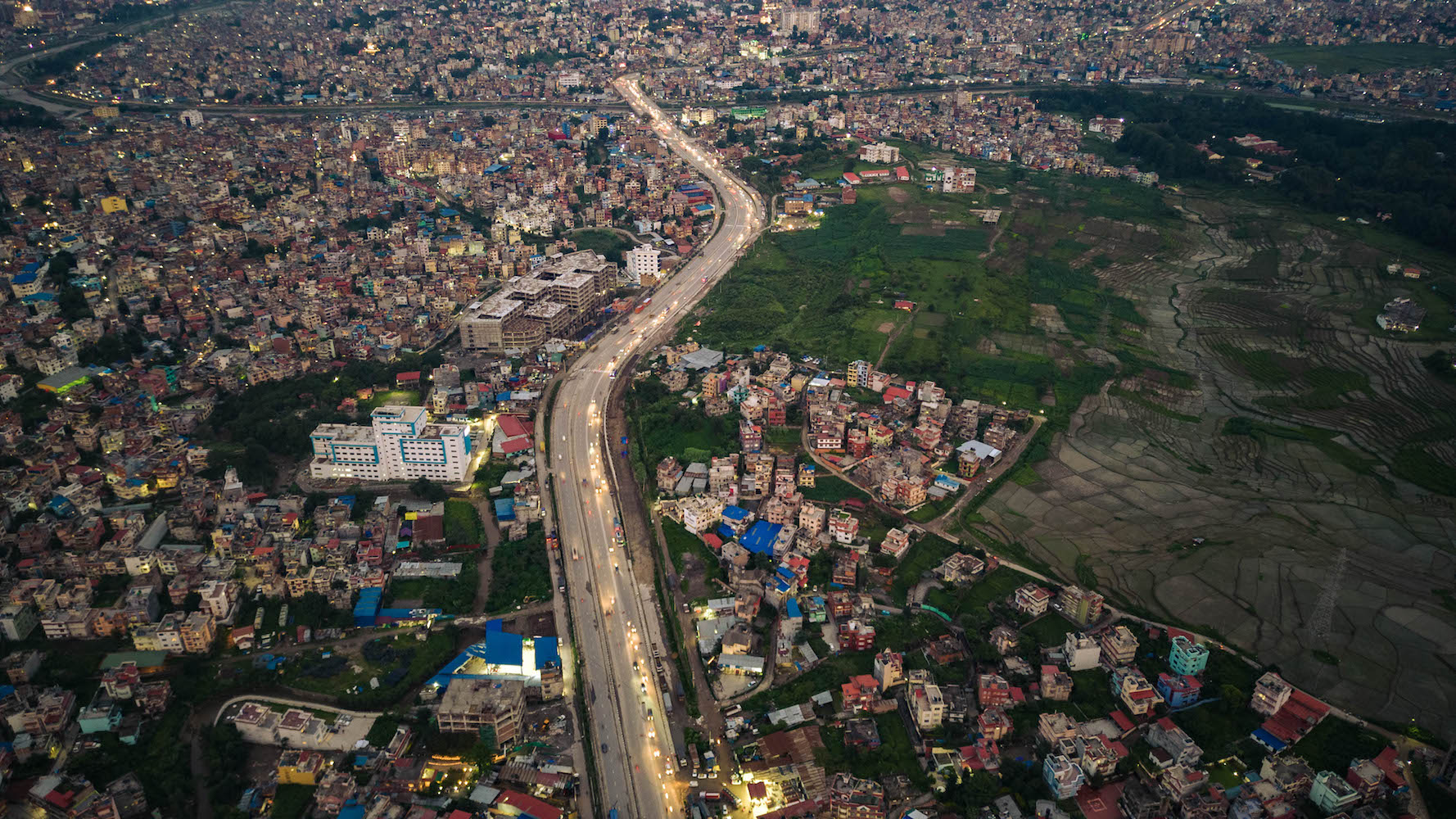TERRACES

The annual paddy planting season is upon us, and the sculpted contours of rice terraces mirror the clouds as farmers wade into the submerged fields.
Across Nepal on Wednesday communities came together knee-deep in mud to transplant the first paddy seedlings on watered terraces.
There was traditional mud splashing, much singing and dancing to Nepali folk tunes and a traditional feast of dahi chiura as they celebrated the beginning of this year's rice cycle that is interwoven with the Valley's festivals.
This golden hour drone photo of Balkhu (above) strikingly juxtaposes the urban sprawl that has encroached on land owned by Tribhuvan University and currently farmed by locals. Some of these plots are gradually being used to construct new buildings and modern facilities for university students. The lower part of this photo shows what Kathmandu Valley looked like during monsoon paddy plantation in the past decades.
The other aerial photos capture rice planting along the Bagmati in Khokana (below). These are the last few remaining patches of paddy that remain untouched by Kathmandu's relentless urban expansion.






Further away from the fields, there are increasing numbers of settlements and brick factories nearby. The kilns fire moulds of fertile clay deposits of Kathmandu's pre-historic lake to feed the voracious appetite for bricks from buildings that now stand on the former rice fields.
The fertile terrace farms of Khokana are disputed, with the government trying to evict farmers to make way for the Kathmandu-Terai expressway.




